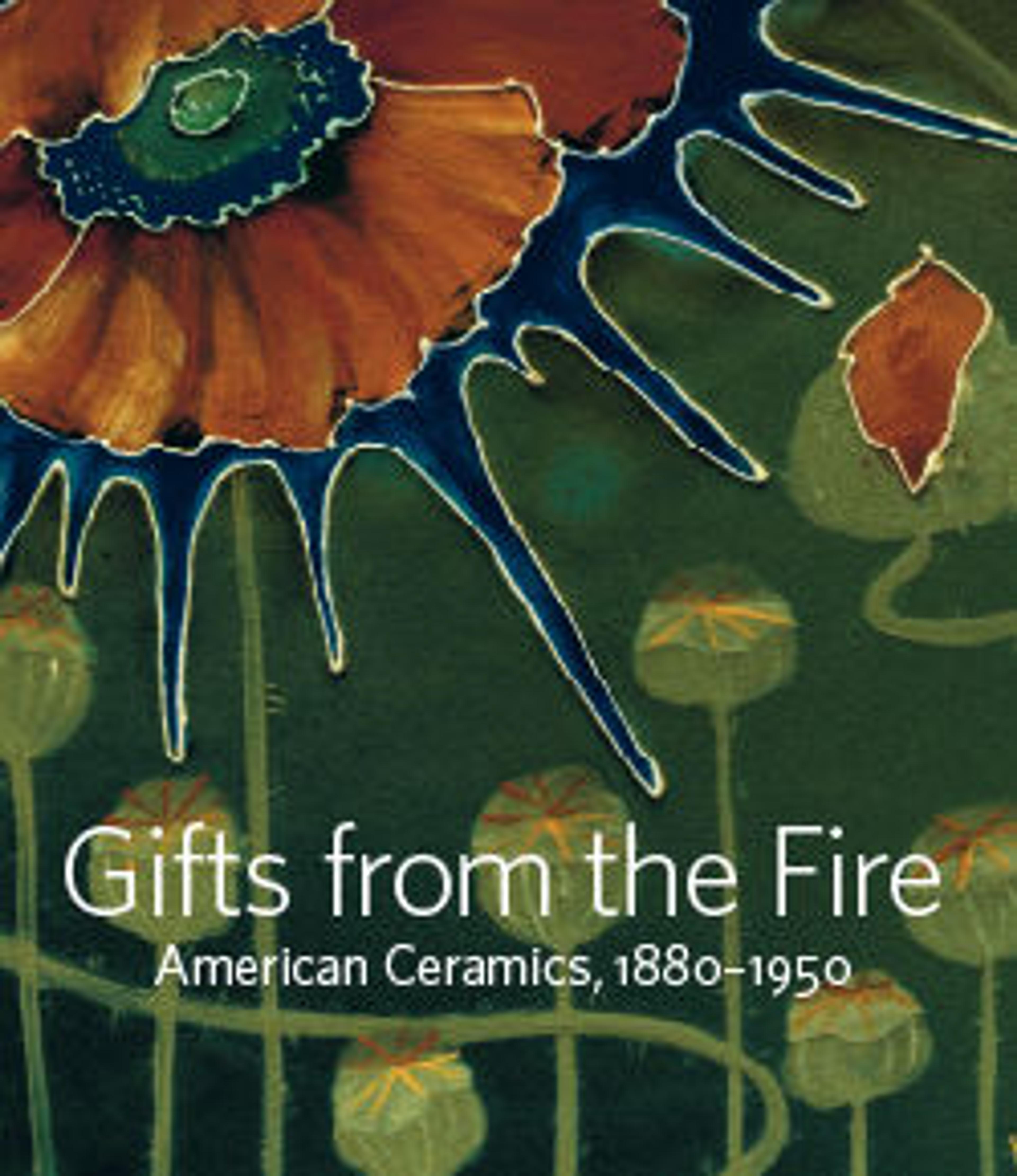Vase
William H. Grueby founded his art pottery in Boston, Massachusetts, after first operating a successful tile works. His exposure to contemporary French ceramics at the 1893 World’s Columbian Exposition in Chicago marked a turning point in his career. He admired the novel matte glazes of the French studio potters, and was especially attracted to the relief designs he saw on the stoneware of August Delaherche. He developed his distinctive glazes, notably his dense, opaque matte green glaze, often with irregular veining that critics compared to the skin of a watermelon. Most of his vessels feature relatively simple modeled decoration of stylized broad leaves. Many of his designers were conceived by Boston architects, George Prentiss Kendrick and Addison Le Boutillier. In customary practice, the throwing, glazing, and firing was done by men, and the decoration was executed by a small staff of mainly women. They would roll out thin ropes of clay and apply them to the vase’s surface, further modeling, tooling, and carving them to finish the designs.
Artwork Details
- Title: Vase
- Manufacturer: Grueby Faience Company (1894–ca. 1911)
- Date: ca. 1898–1909
- Geography: Made in Boston, Massachusetts, United States
- Culture: American
- Medium: Earthenware
- Dimensions: H. 7 9/16 in
- Credit Line: Gift of Martin Eidelberg, 2020
- Object Number: 2020.64.42
- Curatorial Department: The American Wing
More Artwork
Research Resources
The Met provides unparalleled resources for research and welcomes an international community of students and scholars. The Met's Open Access API is where creators and researchers can connect to the The Met collection. Open Access data and public domain images are available for unrestricted commercial and noncommercial use without permission or fee.
To request images under copyright and other restrictions, please use this Image Request form.
Feedback
We continue to research and examine historical and cultural context for objects in The Met collection. If you have comments or questions about this object record, please complete and submit this form. The Museum looks forward to receiving your comments.
